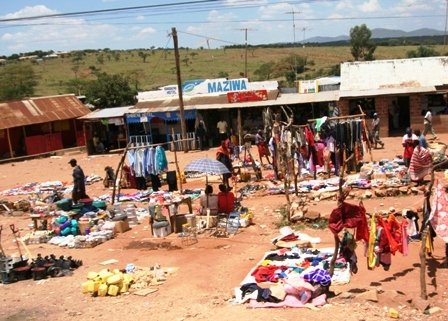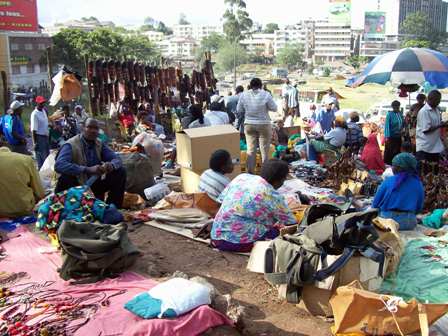Shopping in Kenya
Shopping in Kenya couldn’t be any better! When traveling around, you will come across a variety of arts and crafts, many of them reflecting regional traditions and designs.
What you will find most are textiles, batiks, soapstone & wood carvings. Bead-work and traditional utensils made out of gourds are also very popular, but Kenya’s most important artisan traditions are ironwork, metal jewelery and basket ware. They go back centuries in some communities!
The Maasai bead-work jewelery is particularly popular, with traditional and modern range of designs geared more and more to the tourist market. The leather/beaded bracelets can be worn by women and men and are great gifts to bring home.
It is interesting to note the different types of tribal bead-work; the Maasai and Samburu bead-work differs significantly from that of the Pokot or Turkana. For example the different colored beads that are being used. The bead-work can be anything from jewelery, belts, sandals and keyrings.

The basket-ware has a wide variety as well, from the Kiondo sisal baskets of the Kikuyu, which are given to new visitors/friends as a gift, to the flat woven baskets of the Turkana.
Wooden carvings tend to come from the Kamba people who are specialized in them; there are people, animals, bowls and spoons to napkin rings.
Soapstone art is mostly produced by the Kisii carvers with beautiful paintings on small little boxes, chess sets, plates and little animal & people statues. If you hold them close enough to your nose, you can SMELL the soapstone!
Banana fiber picture, tribal masks and wire toys can easily be found by the big open markets, curios stalls and street vendors.
More about Crafts and Markets in Kenya and Directory!
As far as for the textile; they are absolutely wonderful, colorful with endless different designs, light to pack and fantastic gifts and souvenirs to bring home.
- The Kikoys, which make excellent scarfs, table cloths or bed-covers
- The Kanga, which can be worn as a skirt, headscarf or baby sling
- And a Shuka that can be a red piece of cloth, or now, in more modern times, a red blanket, sometimes with checker designs.
There is also an excellent variety of Contemporary Art in Kenya with a number of specialized art galleries. It has more info on this and a List of Galleries for you to check out!
When you are shopping in Kenya, bargaining is almost always the order of the day. To approach this with a sense of humor and a friendly attitude is your best option. Starting prices are almost always exaggerated and determined on what the seller things the customer can pay – the 'real' price can sometimes be less than half, or more, than that of the initial price.
Three good rules for bargaining are:
- Don’t begin if you’re not in the mood or in a hurry
- Don’t show interest if you’re not actually looking to buy
- Never offer a price you won’t pay

If you’re not sure about the price after some negotiation, try to walk away. If you’re called back, then there is still room to play. If you’re not, than the offer wasn’t enough, and the trader is no longer interested! It does happen! Do keep in mind that it is not just a commercial transaction but a social encounter as well. So, be reasonable and have fun with it!!
How much shopping in Kenya you’d like to do and what you can take home will depend on the size of your suitcase and on how much you are willing to carry around. (...and pay on overweight! ;-)
Some dealers will ship items for you, but make sure they will pack everything well, especially soapstone & wood carvings.
One more thing; be careful and aware of items made of ivory! Besides that it is against the law in many countries to import, it also kills elephants!!! Thank you!
Recommended Links for More Shopping in Kenya Ideas:
- Crafts & Markets in Kenya with Directory
- Contemporary Art in Kenya - List of Galleries
-
Attractions & Sights in Kenya
Return from Shopping in Kenya back to Kenya Travel Ideas home page


